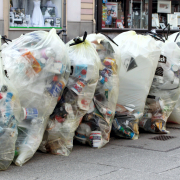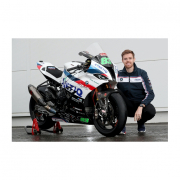Boosting Metal Recycling in Europe
EuRIC, representing the interests of the European recycling industries at EU level, has a “Circular Metals Strategy” prepared and submitted.
“Metal recycling is indispensable to reach EU’s climate neutrality objectives by 2050 (EU Green Deal) and shifting from a linear to a circular economy (Circular Economy Action Plan 2.0),” the confederation wrote in April this year. Metals could – thanks to their intrinsic properties and market value – be indefinitely recycled, and for this reason, they would play a key role in Europe’s sustainable transition. “Metal recycling is not only the most resource-efficient option but also the most climate and energy-efficient route when compared to the production of metals using primary raw materials*)”, EuRIC argued. “Last but not least, given their high value, metals are not littered but collected and recovered to close new material cycles. As a result, metal ores and metal scrap, meeting quality specifications, are commodities priced and traded globally, which could help the globe to further close the loop of materials in global value chains and avoid littering related problems.”
Europe’s metal recycling industry – which is composed of SMEs (small and medium-sized enterprises) and large players – is one of the fastest growing industries, providing local, non-outsourceable jobs, the European umbrella organization for recycling industries underlined. “It offers a unique infrastructure of facilities spread all over Europe, that supplies steel mills and smelters located in and outside Europe with quality grade metal scrap which is resource and climate efficient.” Metal recyclers’ priorities, as outlined in its metals strategy, were threefold:
- Creation of well-functioning internal and global markets for metals
- Rewarding metal recycling environmental benefits
- Increase the intake of commodity-grade metal scrap in metal production
Various hurdles
Despite enormous environmental benefits, substantial bottlenecks keep hampering metal recycling in Europe, EuRIC wrote in February this year.
- “The first one has to do with the fact that Europe’s industry remains mostly linear with only 12 percent of the materials it uses coming from recycling. As a result, in Europe, the supply of metal scrap from recycling meeting industry specifications often exceeds the demand and remains under-utilized in metal production.
- The second one relates to the fact that commodity prices still fail to internalize the massive environmental benefits of metal recycling. There is in EU legislation no incentive that rewards metal recycling lower-carbon and energy footprint when compared with primary raw materials (often extracted outside Europe).
- The third one is rooted in European waste legislation, which hinders more circularity. Metal scrap is a valuable commodity with a positive environmental footprint, which should not be classified as waste but as secondary raw materials. In addition, a number of procedures pertaining to cross-border shipments or to permitting remain far too burdensome to incentivize circular metal value chains.”
Against this backdrop, Cinzia Vezzosi, President of EuRIC, stressed, in particular, the absolute need to set up framework conditions and incentives that steers metal recycling and metal production from secondary raw materials by rewarding their environmental benefits. Taking the example of steel, “it is key to support value chains currently striving to migrate from current blast furnaces, which use primary iron ore and coal, to electric arc furnaces, which use recycled steel and can use power from renewable sources. Low-carbon impact steel and metals, in general, are not only vital to achieving climate neutrality, it is also instrumental to compete better in a rapidly changing market”, she was quoted.
*) Compared to primary production, steel, aluminum and copper recycling save respectively 58, 92 and 65 percent of CO2 emissions (FEDEREC, 2017).
Read the Circular Metal Strategy here: www.euric-aisbl.eu/position-papers/item/525-euric-circular-metals-strategy-2
(Published in GLOBAL RECYCLING Magazine 2/2021, Page 10, Photo: Marc Weigert)









